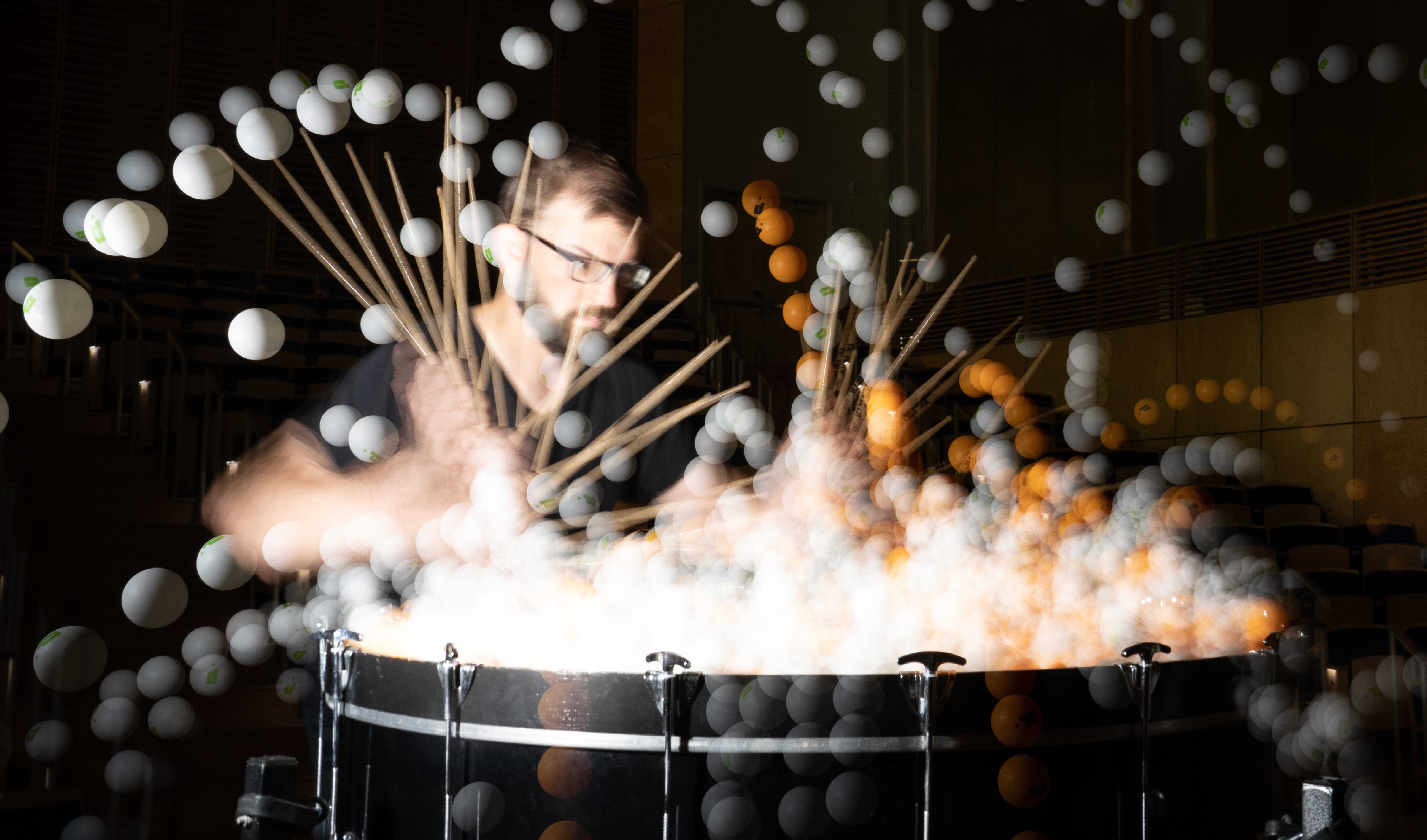- This event has passed.
Part of the Festival’s mission is to promote the vibrancy and bright future of chamber music, and this is reflected in our commitment to promoting and producing new music. During the Gamper Festival of Contemporary Music, we devote a long weekend to focus on the music of living composers performed by faculty and our fellowship students.
TANSY DAVIES (b. 1973)
Aquatic
Nathaniel Wolff, English horn • Michael McKeague, percussion
TEXU KIM (b. 1980)
Homage to anonymous ancient fiddlers
Kayla Bryan, Julimar González, violin
ALEX TEMPLE (b. 1983)
Thick line
Graeme Sugden, flute • Nathaniel Wolff, oboe • Daniel McCarty, bassoon • Jean Marie Smith, horn
ROZALIE HIRS (b. 1965)
article 4 [map butterfly]
Steven Baloue, viola
ELIJAH SMITH (b. 1995)
Sounds of a Fading Daylight
Ju Young Yi, clarinet • Daniel Dastoor, violin • Isaac Berglind, cello • Yuan Zhou, piano
KAIJA SAARIAHO (b. 1952)
Bosun’s Cheer
Elijah Smith, spoken voice • Chi Ting, flute • Bennet Huang, cello • Lindsay Donat, double bass
IGOR SANTOS (b. 1985)
offering [music and the ocean]
Lyndon Ji, piano • video
PROGRAM NOTES
TANSY DAVIES
Aquatic (2011)
Aquatic was born of a fascination for the amazing creatures, preserved as fossils, in the Burgess Shale Formation — located in the Canadian Rockies of British Columbia. Many of the animals had bizarre anatomical features and only the slightest resemblance to other known animals. One example is Opabinia, which has five eyes and a snout like a vacuum cleaner hose, probably lived on the seafloor, had no legs but crawled on lobes, and could also have swum slowly by flapping the lobes, especially if it timed the movements to create “Mexican waves.” Aquatic is perhaps a ‘day in the life of an Opabinia.’ There’s an exotic elegance and grace about this strange animal, for which the English horn seems the perfect counterpart. The percussion pallet surrounds and echoes the English horn, imagining the submerged environment of the early-Cambrian seafloor.
TEXU KIM
Homage to anonymous ancient fiddlers (2015)
Entertainment has been one of the most significant functions of music, and virtuosity is one of the keys to that. One may recall some representative examples, such as Paganini and Liszt, but I believe there have been many more unknown heroes in music history. As the title attempts to show, this piece is about the anonymous ancient fiddlers — their impressive skills and their endeavor to acquire them. This piece has numerous virtuosic variations of a simple imaginary ancient melody. To add more ‘ancient flavor’ and make the work more virtuosic, I incorporated composition techniques like hockets (distributed tune between multiple players), triple and quadruple stops, and detuning effect, all of which predate the Baroque period.
ALEX TEMPLE
Thick Line (2012)
“Thick Line” can be performed by any number of wind or brass instruments, from a trio to an entire concert band. No matter how many musicians are playing, they all read from the same line of music. But it’s an unusual sort of line: it’s got rhythms, dynamics, character markings, and the general shape of a melody, but no specific pitches. The performers get to choose the pitches themselves — so each note becomes a rich harmony, and those rich harmonies move up and down in parallel. It’s as if the melodic line of the piece were drawn not with a fine-tipped pencil, but with a thick piece of charcoal.
ROZALIE HIRS
article 4 [map butterfly] (2004)
The composition article 4 [map butterfly] for violin or viola solo by Rozalie Hirs is inspired by the map butterfly (Araschnia Levana), a kind of butterfly that possesses remarkable drawings on its wings, evoking maps of imaginary continents. article 4 (2004) makes extensive use of the natural harmonics present in the violin (or viola). The score is notated on two staves, indicating sounding and fingered pitch respectively. The sounding and fingered pitches as well as the pitches of the open strings of the violin together form a virtual resonant space. The fingered pitches can be regarded as a metaphor for the shadows cast on the earth by the map butterfly, mysteriously connecting the light, the butterfly’s body, and its movements. The topography of pitch is mapped during the flight of the butterfly, while revealing the physical properties of the string instrument.
ELIJAH SMITH
Sounds of a Fading Daylight (2022)
Sounds of a Fading Daylight aims to capture the subtle movements of shadows cast by trees and leaves during sunset.
KAIJA SAARIAHO
Bosun’s Cheer (2014)
Finnish composer Kaija Saariaho studied composition in Helsinki, Freiburg, and Paris. Her work was notable for including electronics alongside more traditional instruments before going on to compose much larger works including the epic opera ‘L’Amour de Loin’ in 2000, a recording of which won the 2011 Grammy Award for best opera recording. Tonight’s piece, Bosun’s Cheer, is an exhilarating work including some inventive instrumental techniques as well as a hauntingly poetic voice.
IGOR SANTOS
offering [music and the ocean] (2022)
The ocean, in offering, is used as a vehicle to talk about migration, to invoke ancient myths and symbols, and to celebrate cross-cultural and transnational ‘contaminations.’ I also take the opportunity to also bring forth and make sense of my own mixed background, both ethnical and cultural. These concepts and ideas, along with the visuals of the work, were made in collaboration with the visual artist William Villalongo during our residency at the American Academy in Rome.
offering makes use of found footage, found sounds, quotations of ocean-inspired works, and water-like pianistic gestures, all joined in a mimetic cycle — constantly navigating between video, sound, and live performance, as well as back and forth in historical time.


